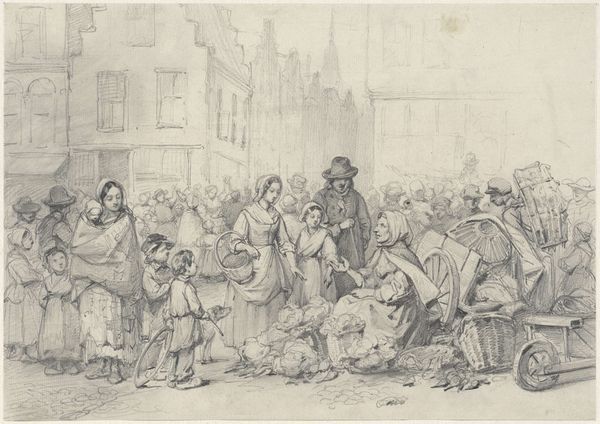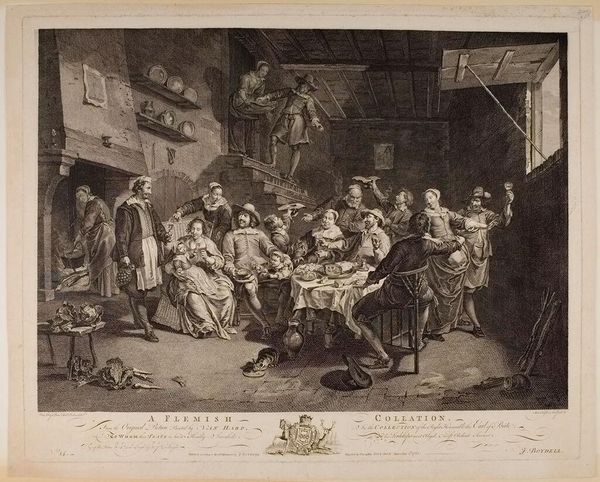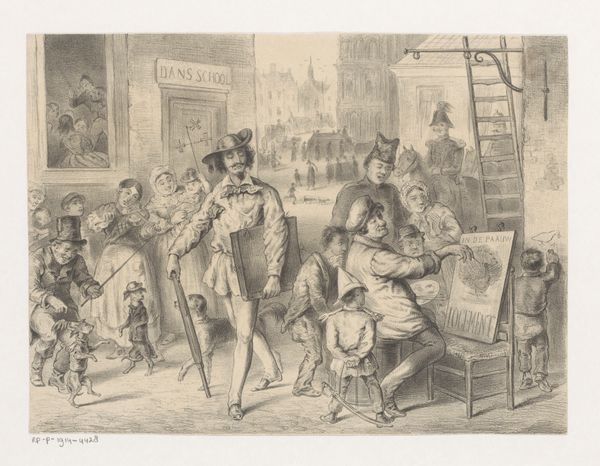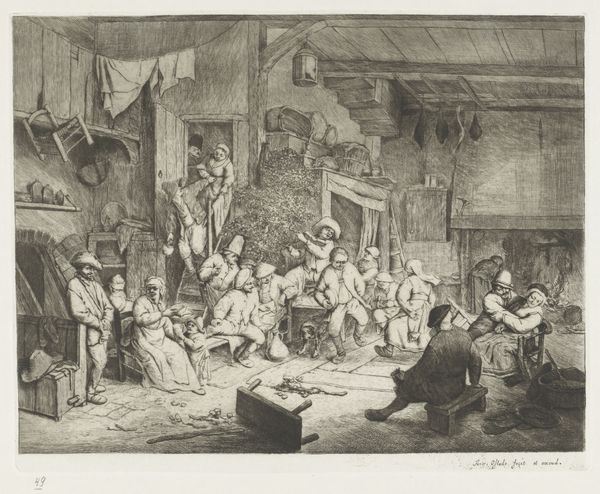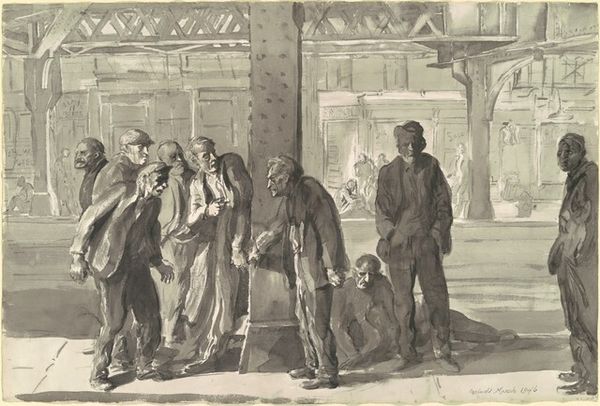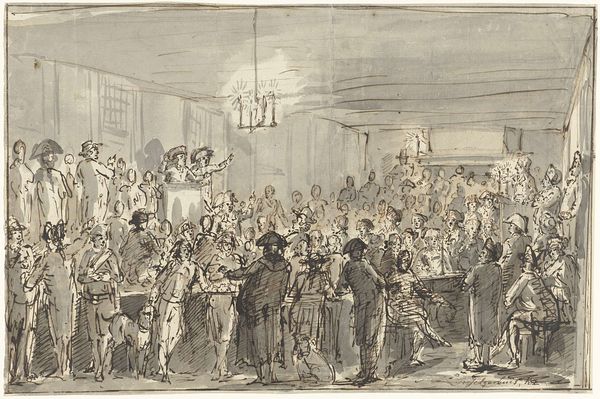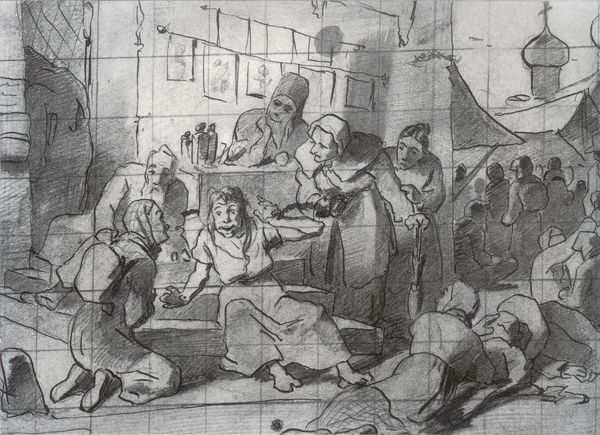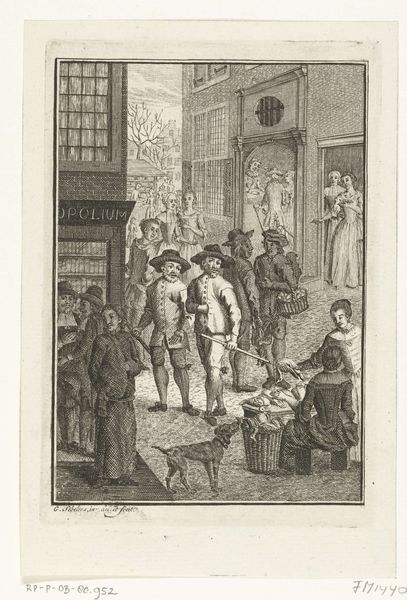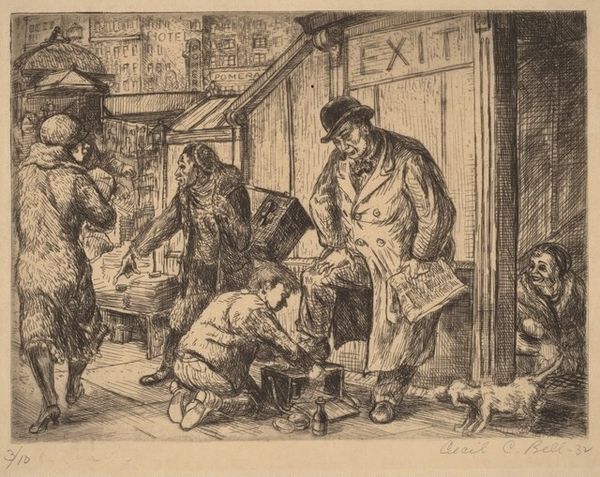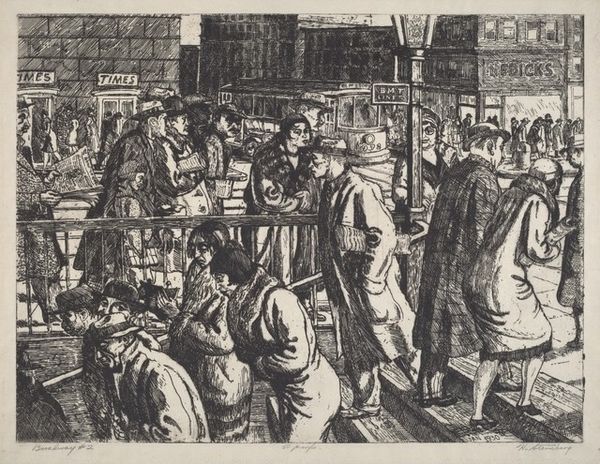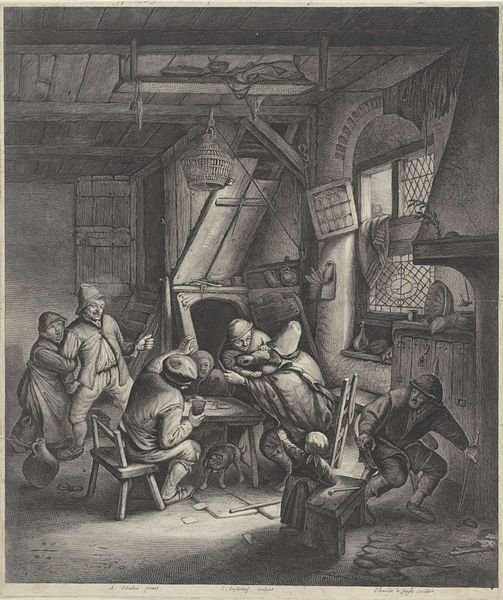
drawing, print, pencil
#
drawing
# print
#
charcoal drawing
#
pencil drawing
#
pencil
#
ashcan-school
#
cityscape
#
genre-painting
#
realism
Dimensions: Image: 248 x 305 mm Sheet: 330 x 406 mm
Copyright: National Gallery of Art: CC0 1.0
Editor: This is Don Freeman's "Washington Square Art Show" from 1934, done with pencil and print. It feels incredibly lively, like a snapshot of a bustling day. What strikes you about it? Curator: For me, the interesting aspect is the very making and selling of art itself as its subject matter. Consider the artist, Freeman. He's capturing this open-air market, this almost frantic exchange happening during the Depression. It begs the question, what kind of labour and materials were considered worthy of representation then? Editor: I see what you mean. It’s not just the art being displayed, but the act of selling it and how people are consuming it. There’s a real mix of people in the crowd too. Curator: Exactly! The piece shows us how art becomes enmeshed within broader economic realities. Note also the medium itself – pencil and print – suggesting reproducibility, accessibility. Was Freeman perhaps interested in democratizing art consumption through affordable reproductions? Editor: That’s a great point. By choosing printmaking, he's making the scene more accessible, in a way commenting on who gets to participate in the art world. Did the Ashcan school influence that choice? Curator: Yes, and recall that the Ashcan School was deeply invested in representing everyday life and questioning traditional artistic boundaries, often engaging in prints, drawings and illustrations. This drawing connects artistic production to consumerism in the everyday, inviting contemplation on labor and class. Editor: So it becomes about who can afford to be an artist and who can afford to buy art, visualized right here in this crowded scene. That shifts my perspective a lot! Curator: Precisely. It moves us away from thinking about the artistic genius and invites us to think more deeply about art's embeddedness within everyday lived experience, production, and consumption. Editor: Thanks, I hadn't considered how deeply materials and processes are related to social commentary here.
Comments
No comments
Be the first to comment and join the conversation on the ultimate creative platform.
